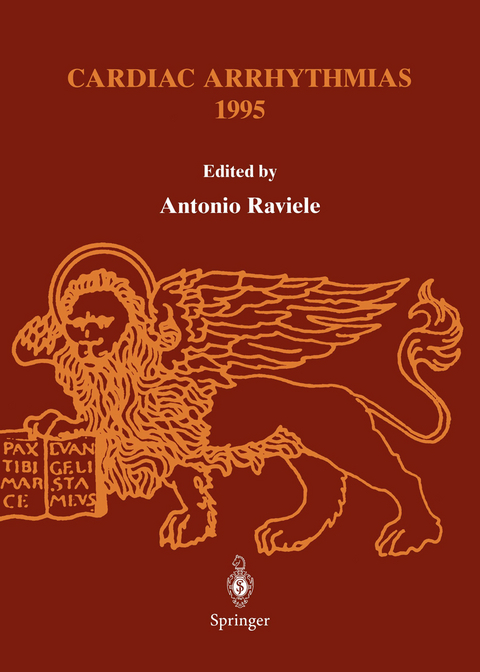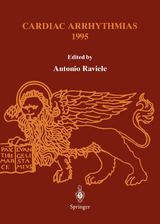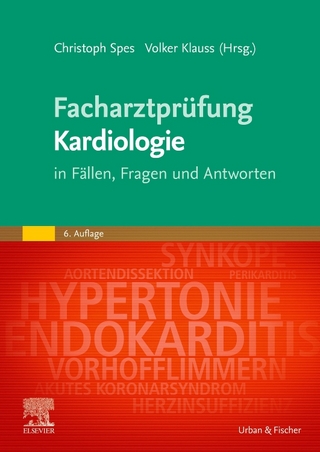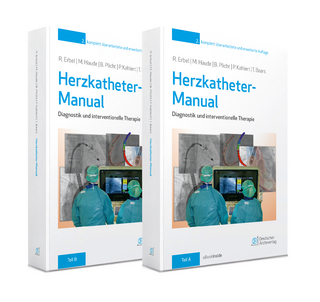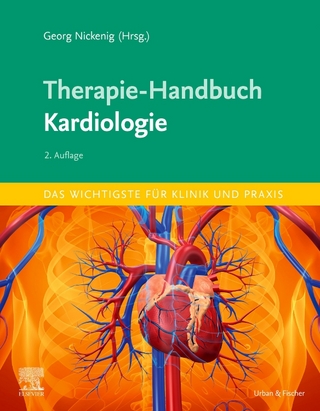Cardiac Arrhythmias 1995
Springer Berlin (Verlag)
978-3-540-75012-3 (ISBN)
Sudden Death and Ventricular Arrhythmias.- Non-sustained ventricular tachycardia: is it possible to identify the high-risk patients and how to treat them?.- QT prolongation in postinfarction patients and sudden death: which relationship?.- T wave alternans. A marker of vulnerability to ventricular tachyarrhythmias.- Idiopathic ventricular fibrillation: which prognosis and treatment?.- Beta blockers, sotalol or amiodarone for the treatment of malignant ventricular arrhythmias?.- New antiarrhythmic drugs for ventricular arrhythmias: do they work?.- What have we learned from the SWORD trial? Can potassium channel blockers reduce sudden cardiac death?.- To treat or not to treat ventricular arrhythmias in dilated cardiomyopathy?.- Which therapeutic approach for patients with hypertrophic cardiomyopathy and ventricular arrhythmias?.- Radiofrequency catheter ablation of ventricular tachycardia in patients with structural heart disease: pathophysiologic considerations to simplify the selection of target sites.- Implantable Defibrillators.- Is total mortality really reduced by the implantable cardioverter defibrillator?.- What are the acute and long-term results of transvenous implantable cardioverter defibrillators?.- How to prevent or avoid inappropriate implantable cardioverter defibrillator shocks?.- What have we learned from stored implantable cardioverter defibrillator electrocardiograms about the mechanism of sudden death?.- Implantable cardioverter defibrillator: a therapy for everyone or for selected patients?.- Implantable cardioverter defibrillator technology in the next ten years: what can be expected?.- Syncope.- Spontaneous asystolic pauses: how frequent is a neuromediated mechanism?.- Pathophysiology of neurally mediated syncope: peripheral and central mechanisms.- Syncope of unknown origin: first head-up tilt test or electrophysiologic study?.- Methodology of head-up tilt test: what is the sensitivity and specificity of the different protocols?.- What do we know today about the outcome of vasovagal syncope?.- Vasovagal syncope with asystolic pause: drugs, pacemaker, or both?.- Invasive tilt testing: the search for a new sensor to permit earlier pacing therapy in vasovagal syncope.- Cardiac Pacing.- Isolated first-degree atrioventricular block: a new indication for dual-chamber pacing?.- Physiologic dual-chamber pacing with short atrioventricular delay in dilated cardiomyopathy: which hemodynamic effects and clinical results?.- Dual-chamber pacing in obstructive hypertrophic cardiomyopathy: is there evidence for a real benefit?.- Automatic mode switching: how useful is it?.- Extraction of chronically implanted pacemaker leads: when and how?.- Supraventricular Tachycardias.- Transesophageal pacing during exercise: is it useful to evaluate palpitations of unknown origin?.- New approaches to treatment of atrial tachycardia.- Atrioventricular node anatomy and physiology: what have we learned from catheter ablation?.- Radiofrequency ablation of atrioventricular node reentrant tachycardias: which results and predictors of success and recurrence?.- Surface electrocardiogram in ventricular pre-excitation: how reliable is it to locate the site of accessory pathways?.- Radiofrequency ablation in the Wolff-Parkinson-White syndrome: do the results justify a widespread application?.- Recurrent palpitations after successful radiofrequency ablation of supraventricular tachycardias: which significance?.- Antiarrhythmic therapy of supraventricular tachyarrhythmias: which role for the drugs today?.- Radiofrequency ablation of supraventricular tachycardias in infants and children: when is it really indicated?.- Atrial Fibrillation and Atrial Flutter.- Lone atrial fibrillation: which anatomical and electrophysiologic substrate?.- Is mortality in patients with atrial fibrillation related to the underlying heart disease or to the arrhythmia?.- Thromboembolic risk in patients with atrial fibrillation: can it be predicted on the basis of clinical variables?.- Should all patients undergo transesophageal echocardiography before electrical cardioversion of atrial fibrillation?.- Anticoagulation in atrial fibrillation: is aspirin sufficient?.- Pharmacologic cardioversion of atrial fibrillation: always the same algorithm or different drugs for different patients?.- Prophylaxis of atrial fibrillation: what are the benefits and risks of the different antiarrhythmic drugs?.- Atrial fibrillation with a slow ventricular response: is theophylline a good alternative to a pacemaker?.- Control of rapid heart rate in patients with atrial fibrillation: drugs or ablation?.- How effective and safe is internal direct current shock for atrial fibrillation refractory to external cardioversion?.- Automatic implantable atrial defibrillator: a dream or a real prospect?.- Paroxysmal atrial flutter: which mechanism and treatment in the era of catheter ablation?.- Author Index.
| Erscheint lt. Verlag | 1.10.1995 |
|---|---|
| Zusatzinfo | 260 p. |
| Verlagsort | Milano |
| Sprache | englisch |
| Maße | 210 x 297 mm |
| Gewicht | 844 g |
| Themenwelt | Medizinische Fachgebiete ► Innere Medizin ► Kardiologie / Angiologie |
| Schlagworte | Ablation • anatomy • Atrial Fibrillation • Echocardiography • electrocardiogram (ECG) • heart • heart rate • Herzrhythmusstörungen • sudden cardiac death |
| ISBN-10 | 3-540-75012-6 / 3540750126 |
| ISBN-13 | 978-3-540-75012-3 / 9783540750123 |
| Zustand | Neuware |
| Informationen gemäß Produktsicherheitsverordnung (GPSR) | |
| Haben Sie eine Frage zum Produkt? |
aus dem Bereich
